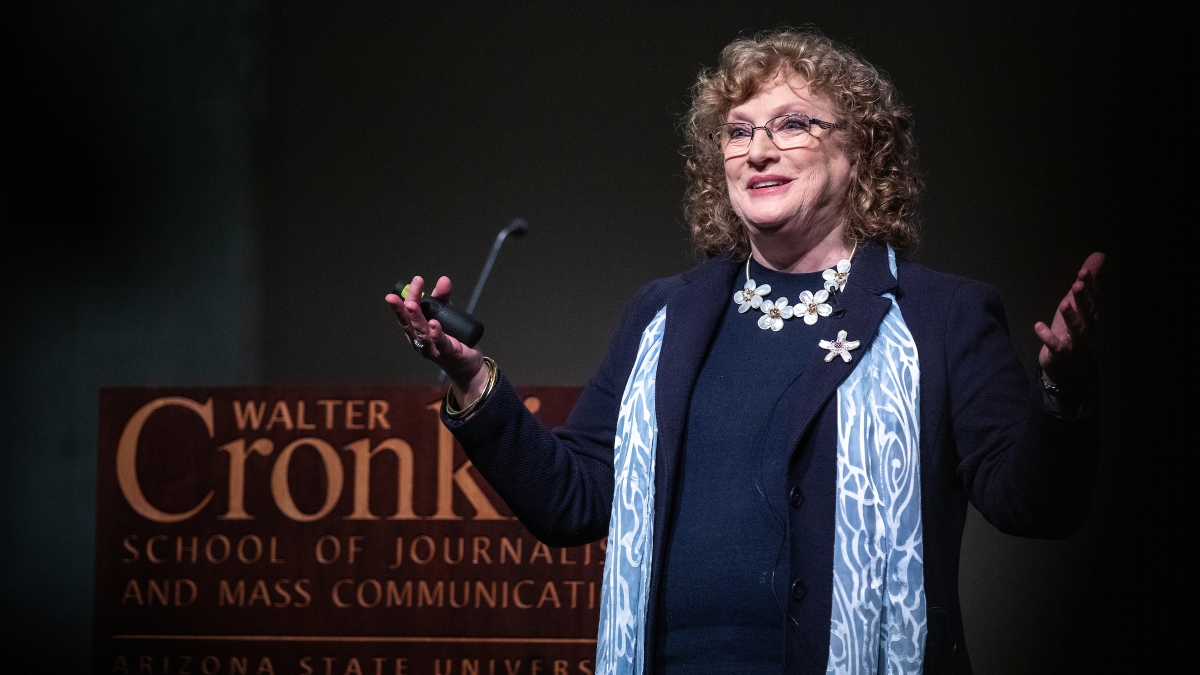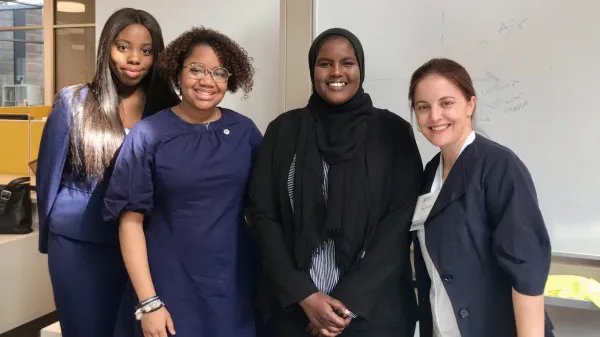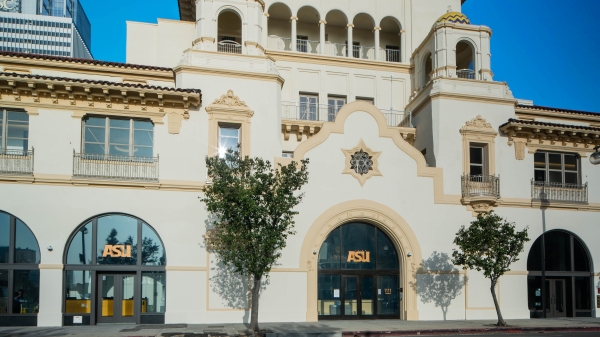‘News deserts’ making communities cultural wastelands
Visiting Knight Chair says stakes are high when newspapers go out of business

Losing a local newspaper isn’t just a loss to the region — it’s a blow against grassroots democracy and can disturb the entire news ecosystem.
These losses — termed “news deserts” — are becoming a common occurrence in all 50 states, creating a news vacuum for millions of people.
“Newspapers are both community builders and educators in many small to mid-size communities,” said Penelope Muse Abernathy, Knight Chair in Journalism and Digital Media Economics at the School of Media and Journalism at the University of North Carolina at Chapel Hill. “What happens is when you lose that many journalists, then you lose everything from Pulitzer Prize-winners to editorial writers to the person that covered town council meetings to the person who is the editorial cartoonist, city editors, copy editors or a news editor.”
Abernathy’s talk, “The News Desert Challenge,” on Monday kicked off the spring 2019 “Must See Mondays” lecture series at the Walter Cronkite School of Journalism and Mass Communication on Arizona State University’s Downtown Phoenix campus.
“One of the most serious side effects of the disruption of traditional media is the acceleration of the decline of local news in small communities across the country,” said discussion moderator Mi-Ai Parrish, the Sue Clark-Johnson Professor for Media Innovation and Leadership at Cronkite. “Professor Abernathy is an expert on this disaster, having studied and written about this for years. It’s particularly resonant today with even the large markets cutting back on local coverage.”
Abernathy said local newspapers have been approximately 85 percent of the news source for thousands of residents in inner-city neighborhoods, affluent suburbs and rural towns across the country, and news and information can impact the quality of their everyday lives. In the past decade and a half, nearly 1 in 5 newspapers has disappeared and the other ones left standing — large dailies in major cities — have become mere shells of themselves.
Since 2004, the United States has lost more than 60 dailies and 1,700 weeklies. Hundreds, if not thousands of communities, Abernathy said, are at risk of becoming isolated news deserts. There is little to fill that news void when a paper shutters, she said.
Other numbers presented by Abernathy paint an even grimmer picture: Newspaper employment has dropped from 52,000 to 26,000 since 2008. And last year employment in television newsrooms has surpassed newspaper employment for the first time ever.
“One of the things that happens is when you have a diminished news outlet is that you end up relying on Facebook for your news,” Abernathy said. “So you think about it as a news vacuum and what technology has not done there to provide critical information so that we can be well informed.”
She further added that local newspapers have historically bound people together in a community. They also educate the populace, providing them with information to guide important decisions that will affect the quality of their lives, as well as those of future generations. She said these communities, including nonvoters, make informed decisions about local candidates, policies and municipal decisions through local news sources.
“When you lose someone who does not show up to cover your county or town council meeting, that is an open invitation to corruption, to paying more for your taxes going forward because having someone at a routine council meeting helps bring about transparency,” Abernathy said. “It has huge implications for society going forward.”
Abernathy said technology drove these newsroom losses and essentially undid two centuries worth of groundwork in two decades. Adding to the problem, she said, is that starting in the 1990s, newspapers started getting gobbled up by hedge funds and private equity and media companies looking to turn a profit rather than play their traditional role as community builders. She said about 50 percent of all newspapers in the last decade have changed hands, resulting in turnovers, countless layoffs, cost-cutting measures and instability in a business that is reliant on credibility.
“The problem with this is that they don’t bring forth the same sort of civic sense of mission that you would find in the past,” said Abernathy, who added that trust in democracy at all levels suffers when journalism is lost or diminished.
Abernathy said it will take a concerted effort of stakeholders and a variety of industry groups, including philanthropic foundations, nonprofit organizations and scholars, to address the challenges local newspapers face.
Despite the statistics and downward trends in the newsroom, Abernathy said she sees hope in journalism students and the belief that new technological tools with which to consume news will be invented in the near future. She’s even excited about the future of news.
“What excites me the most is what excited me in the beginning,” Abernathy said. “You have an incredible opportunity to be a part of the conversation to change the trajectory of the community.”
Top photo: University of North Carolina journalism Professor Penny Abernathy speaks about "The News Desert Challenge" on Monday, Jan. 28, 2019, at the Cronkite School's "Must See Mondays" lecture series. Photo by Charlie Leight/ASU Now
More Law, journalism and politics

School of Politics and Global Studies director's new book explores mass violence
Why do people commit atrocities and why are certain groups, including religious and ethnic, more vulnerable to large-scale violence? These questions are explored in a new book by Güneş Murat Tezcür…

ASU faculty contributing to improvement of Wikipedia
Many academics have a love-hate relationship with Wikipedia. While the website has information about almost anything you can imagine, the credibility of that information is sometimes suspect. Tracy…

ASU Law students gain vital experience through Los Angeles location
Students at the Sandra Day O’Connor College of Law at Arizona State University may be concentrated in the school’s downtown Phoenix headquarters, but they have more choices than ever when it comes to…